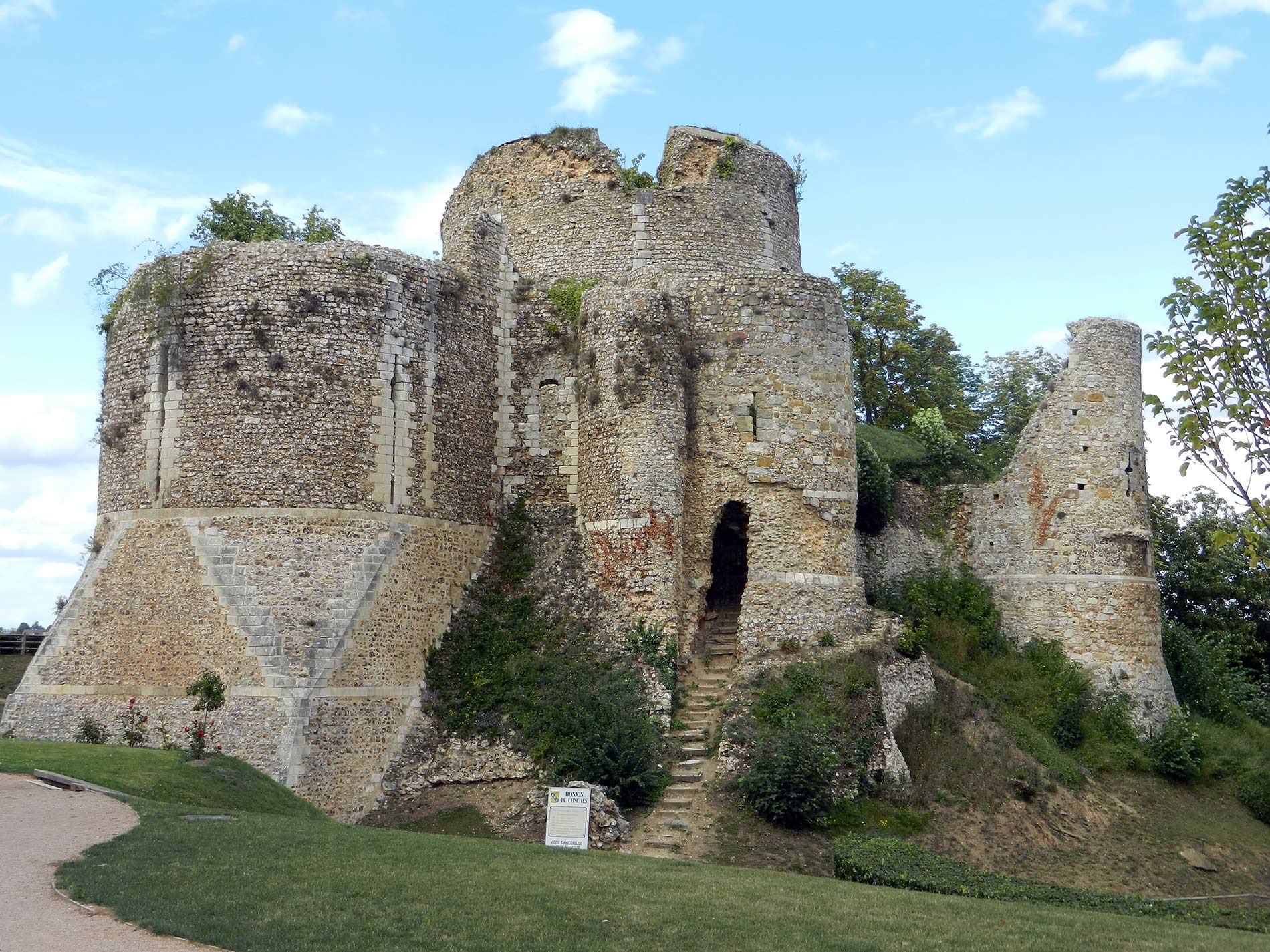
Machicolations are similar in purpose to hoardings, the main difference being that they’re permanent and made out of the same material as the wall itself. Once a threat presented itself, they would mount them atop the walls and cover them in fresh animal skins, which would keep them from being set ablaze. In times of peace, hoardings would be taken down and stored away as prefabricated sections. Without these hoardings, defenders would have to overexpose themselves in order to fire at the enemy directly below. They have window-like openings along the breastwork to shoot arrows or bolts, as well as holes in the floor to throw rocks or other projectiles at the enemy soldiers hugging the base of the wall. The purpose of hoardings is to provide the wall defenders with a better angle of firing down on attackers located at the base of the wall. These take the form of a roofed porch suspended on perpendicular supports. Hoardings, sometimes called hourdes, are wooden defensive structures built on top of stone or brick walls. Rusticated masonry predates Ancient Rome and has been in use on many castle walls up until the proliferation of gunpowder and cannon fire. It’s somewhat similar to how spaced armor works on modern tanks. The uneven surface of the rusticated stones prevented the direct energy transfer of the projectile into the wall. Historians have figured out that rusticated stone walls were far better at dissipating the energy of a high-speed projectile like the ones fired from a catapult, trebuchet, or other ancient or medieval artillery. And while these were definitely a benefit, it turns out that bossing also had a more defensive purpose. Some have even speculated that it gave the fortress a more menacing appearance. Initially, it was believed that rustication was simply a technique to save both time and construction costs. For many years, historians have debated why some of the masons of old used to do this. Rusticated WallsĪlso known as bossing, rustication refers to building stones that are left rough and uncut on the external facing side of a wall. Kyffhäusen Castle in Germany, for example, has a well that goes roughly 577 feet deep. Castles built on high hills or rock outcrops often had incredibly deep wells to have a water source inside the walls. These types of castles built next to rivers or lakes also had the added benefit of providing a steady source of fresh drinking water. Building on an island in the middle of a lake has the same effect. This provides a natural defense system that can be artificially extended to surround the entire castle complex. Rock outcrops are even more effective for castle defense purposes but required more time, energy, resources, and know-how to build and maintain.Īnother great place to build a castle is next to a river, particularly a river bend. The keep, which was the primary defense element of the motte-and-bailey castle – and the home of the local lord – was situated on top of a steep hill or earthen mound known as the motte. They were popular during the 11th century, particularly in France and Norman England.

Motte-and-baileys were some of the earliest examples of castles in the true meaning of the word. Not only does it extend the height of the walls in relation to the enemy army, but it also forces them to charge uphill, slowing them down and making it difficult, if not impossible, to bring siege equipment up close. Building a fortification on high ground is always a good idea. You want to make it very hard for the enemy to besiege you. One of the most important things to consider when building a castle is choosing a location that can take advantage of as many natural features as possible.


 0 kommentar(er)
0 kommentar(er)
